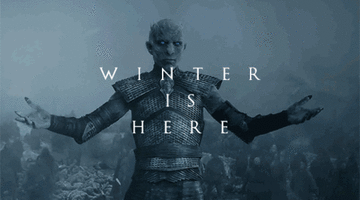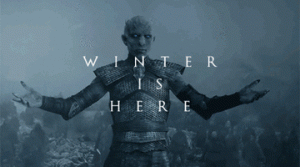
 Traditionally, Winter is a punting wasteland.
Traditionally, Winter is a punting wasteland.
Aside from the obvious quality races over the Brisbane Carnival, the rest of Winter racing is difficult at best, and bloody impossible at worst for the average punter. Some of us out there in Punterland might be old enough to remember Professor Julius Sumner-Miller asking “Why is it so?” it’s maybe a fair question as well, when we look at what makes Winter so problematical. It’s also a fair question to ask how we can mitigate punting risk over the Winter period.
OK, why is it so?
The obvious answers include the fact that Winter throws up lots of heavy tracks that some horses just can’t handle – and some just love. How do we work out which of our selections falls into which category?
Here’s an idea, breeding plays a major part.
In general, stock sired by Sequalo seem to get the giggles when it rains. But it’s not that easy. Think about Spirit Of Boom – a Sequalo horse, and Sequalo goes back to the noted Irish stallions Rustic Amber and Thatching. That’s a sireline with one of the world’s best pedigrees for handling soft conditions. The problem is that Spirit of Boom was actually far better suited racing on top of the ground. He scored wins or placings 72% of the time on good conditions, but had two unplaced runs on heavy tracks and finished so far back that he had to borrow the caller’s binoculars to see the winner pass the post! And just to confuse the issue even further, Spirit of Boom’s half-brother, Temple Of Boom, throws back to the Piccolo sireline, a noted dry track line. But Temple of Boom was a knob on wet tracks, winning or placing in 75% of his wet track starts. But this is really the exception that proves the rule. There is a genetic trait that can get passed on through sirelines in particular. Take Snitzel as a case in point and think about horses like Sizzling, Hot Snitzel, Malavio and Sweet Idea who contribute to an overall win return for Snitzel stock that hovers around a 20% strike rate. Snitzel was out of a Snippets mare, and that traces back to Lunchtime, another UK stallion with outstanding wet track ability. So, that tells us that anything by Snippets is also worth thinking about on wet tracks. As is anything by Mossman, Commands, Dane Shadow, Street Cry, Hard Spun, Snippetson and High Chapparal. But stay away from horses out of Rory’s Jester mares – they are renowned for producing donkeys on wet ground. The general rule is that sticking to horses with good wet track sirelines just takes one of the punting variables out of play.
The next obvious point is that Winter tracks generate fast lanes and slow lanes much more frequently than happens in other seasons. Eagle Farm, at the moment, is just a disgrace, but there are other tracks with similar, if not as bad, problems. The trick is to be aware of how a given track is playing on any day. That means having a bit of patience, and just watching the first few races to see how the pattern of racing evolves. There is absolutely no point backing a “swooper” if the track is playing to a strong leader-bias! And check out the jockeys who bother to walk the track before the first race. They are doing their homework, and they will find the fast lanes. Again, studying the history of any track in wet conditions, and understanding the probable bias, takes care of another of the punting variables.
The next obvious point to think about is that, by and large, and excluding the Brissy Winter Carnival that does attract the top mudlarks, most of the best horses are spelling over Winter. That means that the race fields are often very evenly matched, and, in the bush, of pretty poor quality. It makes punting successfully very hard. For those of you who use CHOOSER, you will have seen that CHOOSER tends to offer fewer Qualifying Races in Winter months. That is how it should be, given that CHOOSER is a risk-mitigation concept. Betting on races with evenly-matched fields, say with the favourite starting at $5.00 and with another four or so starters under $10.00 is a quick way to a bank loan to pay the mortgage! So, look for the fields that aren’t so even in quality. It’s an obvious point, but that’s what CHOOSER does – and it works!
The less obvious points concern the type of races and the type of riders.
Let’s take the type of races first. It isn’t a coincidence that jumps racing is Winter-focused. Aside from the obvious concern that jumping horses on hard tracks increases the risk for both horse and rider, the fact is that softer tracks play into how jumps horses are trained. The tempo of jumps racing is much slower than flat racing and the emphasis is on training a horse for stamina and endurance, plus safe jumping, not for blinding speed and turn of foot. Jumps races are won by the horses who get tough when the going gets tough. What does that mean for the Winter punter? It simply means that we shouldn’t discard jumps events as a worthwhile betting medium. Look at the history and you will see that the good jumping horses tend to win consistently. This season, Renew and Ancient King, trained by Darren Weir, are stringing wins together. In recent years, Bashboy, and many others, did the same. It happens because there aren’t that many jumpers compared to flat horses, and that means that they come up against the same or similar opposition in many races. Until the handicapper catches up to them, these winning horses are a pretty safe bet – if you discount the risk over having to jump the fences!
The same tempo argument applies to distance flat races. The trick here is to look for the horses with the stamina bloodlines and race fitness. Look for the horses that are 3 or 4 starts into a preparation and are getting out over at least 1600 metres.
Look also at the riders. The key attribute a jockey need to ride successfully on wet tracks is the ability to balance the horse, and to get the horse into a comfortable galloping rhythm that can roll up into an accelerating finish. The ability to do that, with very few exceptions, comes with experience. Junior jockeys that can do that on firm tracks often struggle on wet tracks – they just don’t have the hard yards under their belts as yet. So, a smart punter will look at the riders, as well as the relative weights horses are to carry. It’s not always a plus to take a claim.
So, should we punt in Winter? I don’t think that Winter will ever stop a keen punter, so the point is moot. But we can look at mitigating the risk – and CHOOSER is one option that puts all of these factors in the one system. You can check out CHOOSER on the Just Racing Profit Centre or click here: https://justracing.com.au/chooser/
